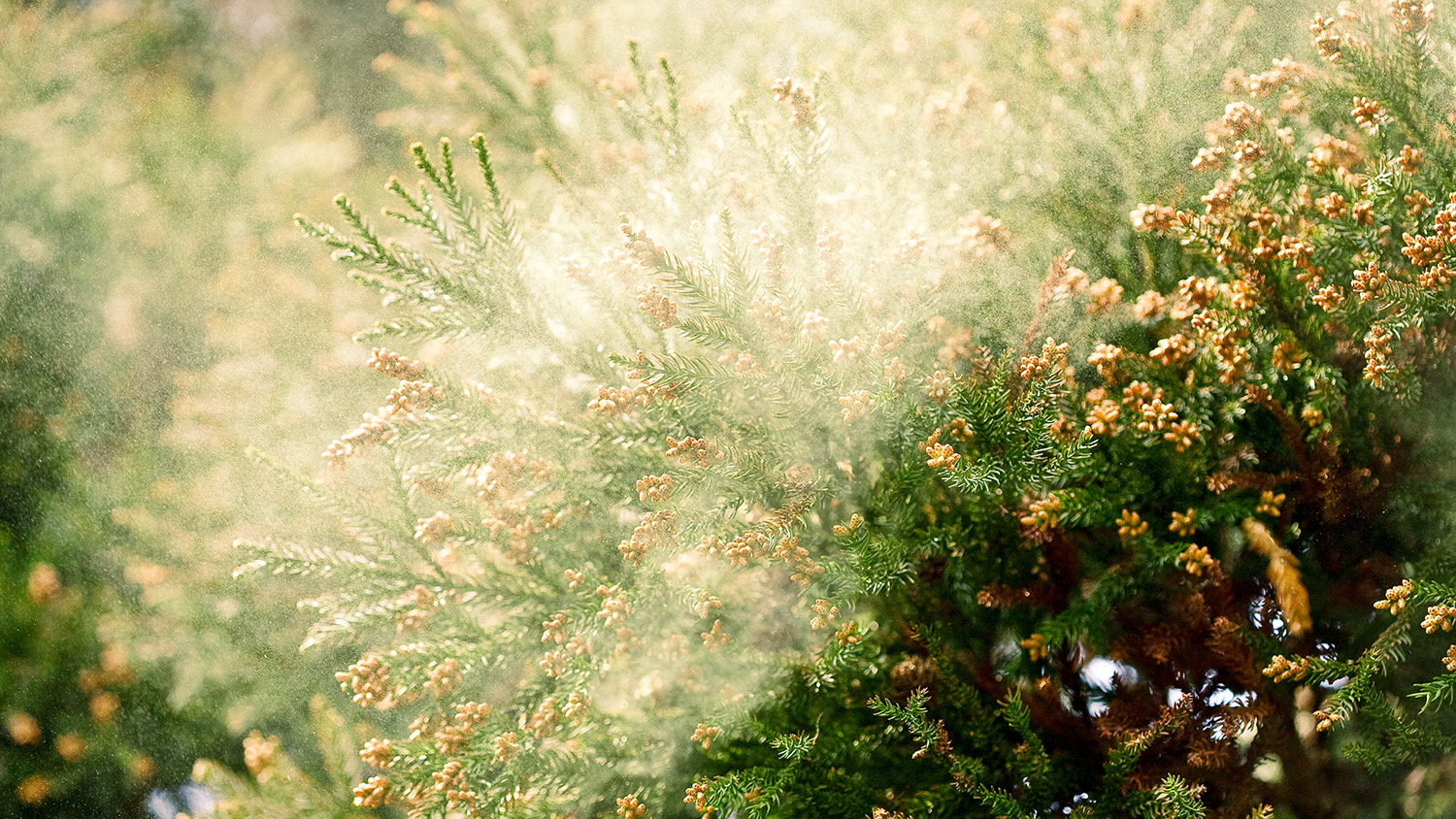Spring may bring warmer weather and longer days, but it also brings suffering to millions of people with seasonal allergies. It’s that time of the year when trees, grasses and weeds release pollen into the air.
When the yellow grains come into contact with someone who’s allergic, it can cause their immune system to go haywire. This can result in symptoms like runny nose, itchy eyes, sore throat and more.
Tree pollen is often the cause of most allergic reactions in the early spring, though the timing of pollen production varies widely within local areas and among geographic regions.
In Raleigh and other parts of central North Carolina, trees begin to release pollen between late February and early March. Tree pollen usually peaks during the first or second week of April.
Weather conditions can have a major impact on the amount of pollen in the atmosphere, according to Robert Bardon, a professor of forestry and environmental resources at NC State.
“Pollen counts tend to be highest early in the morning on warm, dry, breezy days and lowest during chilly, wet periods,” Bardon said.
Certain trees produce more pollen than others, according to Bardon. Loblolly pines, for example, produce a significant amount of pollen in North Carolina and other parts of the Southeast during the spring.
Nevertheless, while pine pollen makes up much of the yellow film that coats cars and other outdoor surfaces, it is non-allergenic due to the large size of its grains and its low levels of proteins.
Trees such as oak, birch, maple, cedar and hickory are known to produce allergenic pollen, according to Bardon. The grains are lightweight and easily carried by wind, making them much more likely to be inhaled.
Pollen production is staggered over the season. But climate change is causing plants to produce pollen earlier in the spring, according to Bardon.
Many plants rely on temperature cues for biological processes like pollen production. Research shows that pollen production now starts 20 days earlier and ends 10 days later than in the 1990s.
“I began tracking pine pollination about six or seven years ago, and I can say that while the timing of production fluctuates, it has been starting earlier — sometimes by a week,” Bardon said.
Despite the seasonal inconvenience it causes for people, pollen is an essential part of the environment and economy. It not only fertilizes plants to produce fruits, fiber and seeds, but it also contributes billions of dollars to global forest and food production and supports the production of biofuels, medicines and more.
3 Tips to Reduce Seasonal Allergy Symptoms
While you can’t evade pollen entirely, you can follow a few simple steps to reduce allergic reactions. Check them out below.
- Check your local pollen report to determine whether or not you should spend an extended period of time outdoors.
- Go outdoors before dawn and in the late afternoon to early evening, when the pollen counts are usually at their lowest.
- Take a shower and wash your clothes after going outside. Pollen grains stick to most surfaces.
This post was originally published in College of Natural Resources News.
- Categories:



